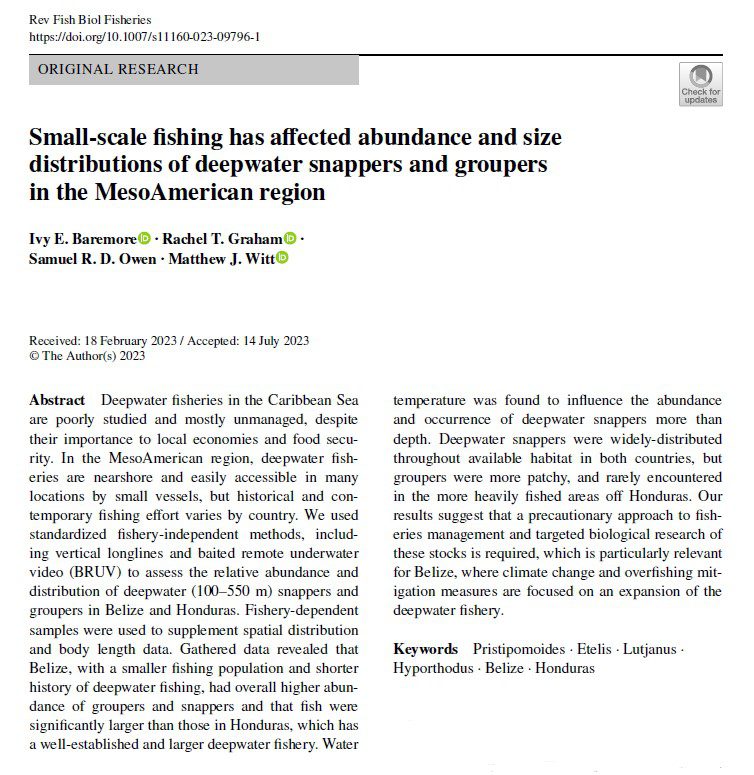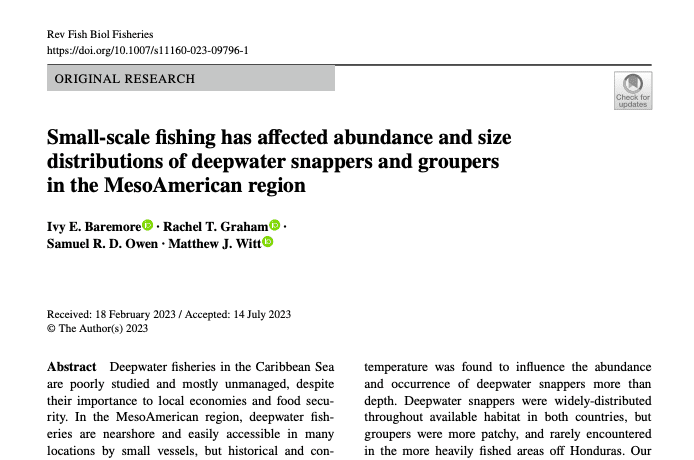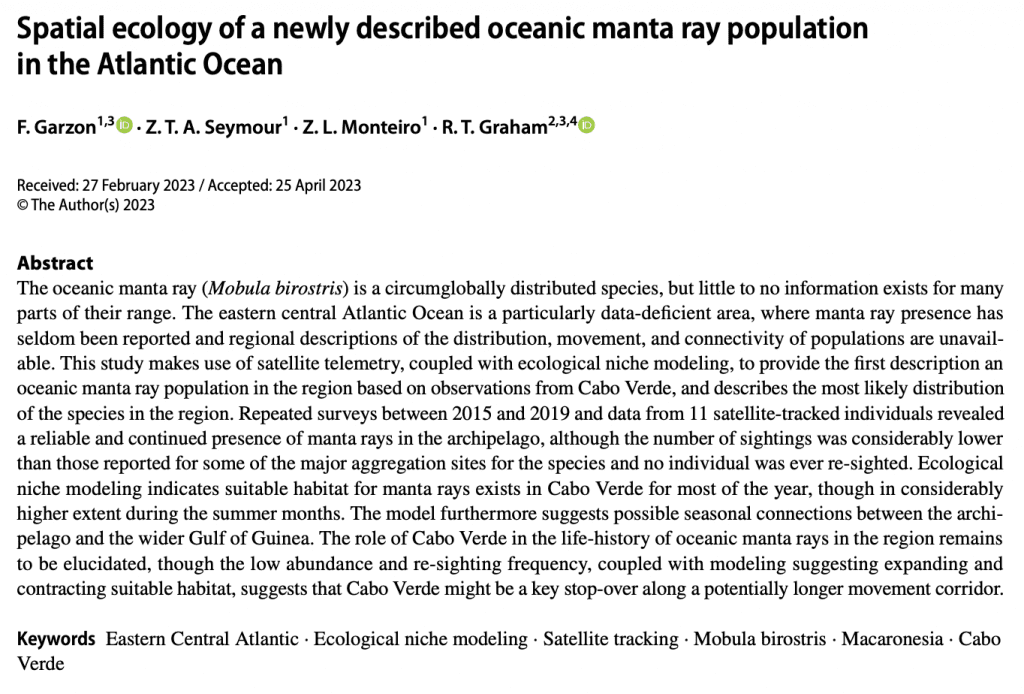We describe the real-time movements of the last of the marine mega-vertebrate taxa to be satellite tracked – the giant manta ray (or devil fish, Manta birostris), the world’s largest ray at over 6 m disc width. Almost nothing is known about manta ray movements and their environmental preferences, making them one of the least understood of the marine mega-vertebrates. Red listed by the International Union for the Conservation of Nature as ‘Vulnerable’ to extinction, manta rays are known to be subject to direct and incidental capture and some populations are declining. Satellite-tracked manta rays associated with seasonal upwelling events and thermal fronts off the Yucatan peninsula, Mexico, and made short-range shuttling movements, foraging along and between them. The majority of locations were received from waters shallower than 50 m deep, representing thermally dynamic and productive waters. Manta rays remained in the Mexican Exclusive Economic Zone for the duration of tracking but only 12% of tracking locations were received from within Marine Protected Areas (MPAs). Our results on the spatio-temporal distribution of these enigmatic rays highlight opportunities and challenges to management efforts.

Small‑scale fishing has affected abundance and size distributions of deepwater snappers and groupers in the MesoAmerican region
Deepwater fisheries in the Caribbean Sea are poorly studied and mostly unmanaged, despite their importance to local economies and food security. In the MesoAmerican region,


